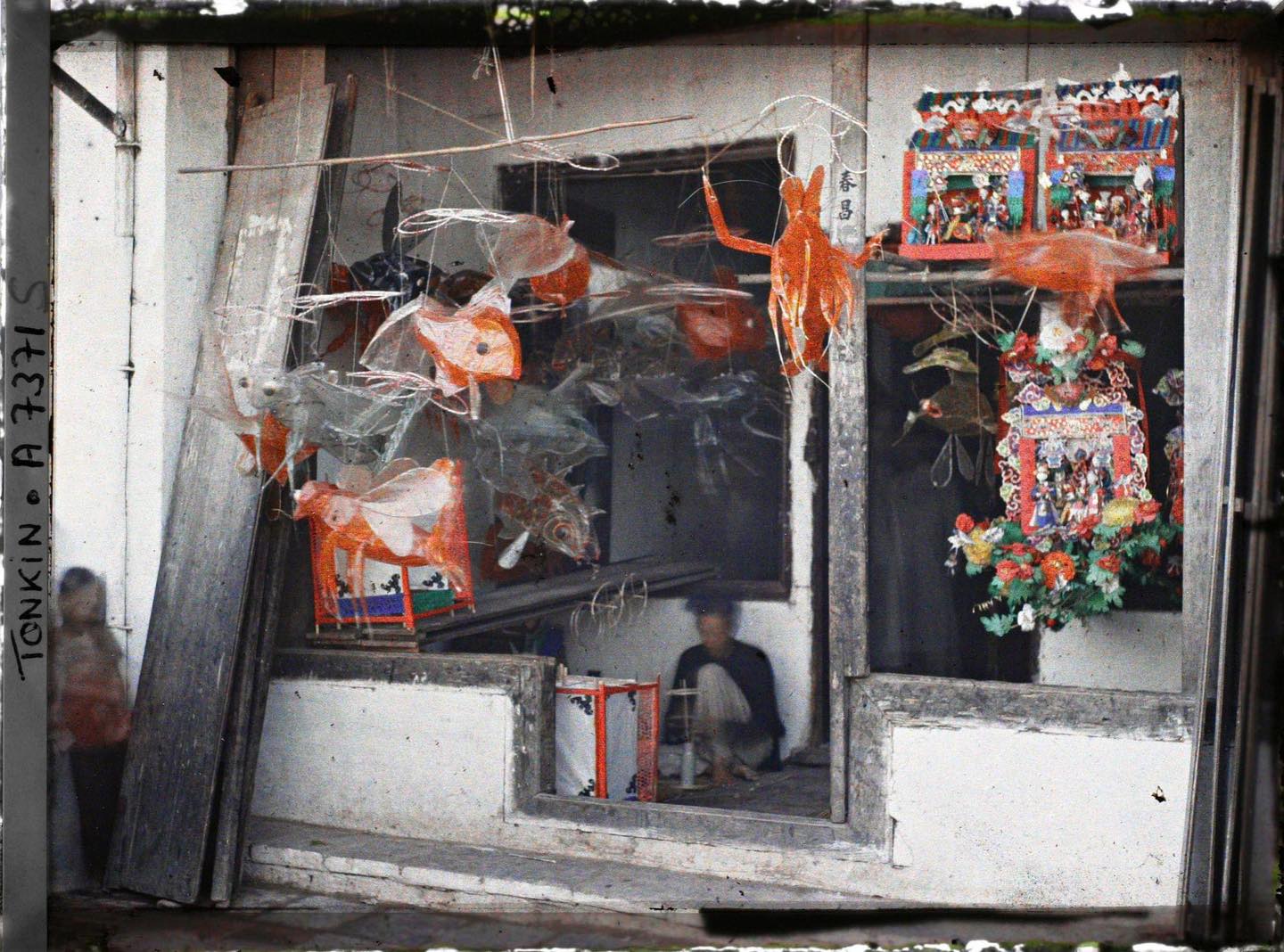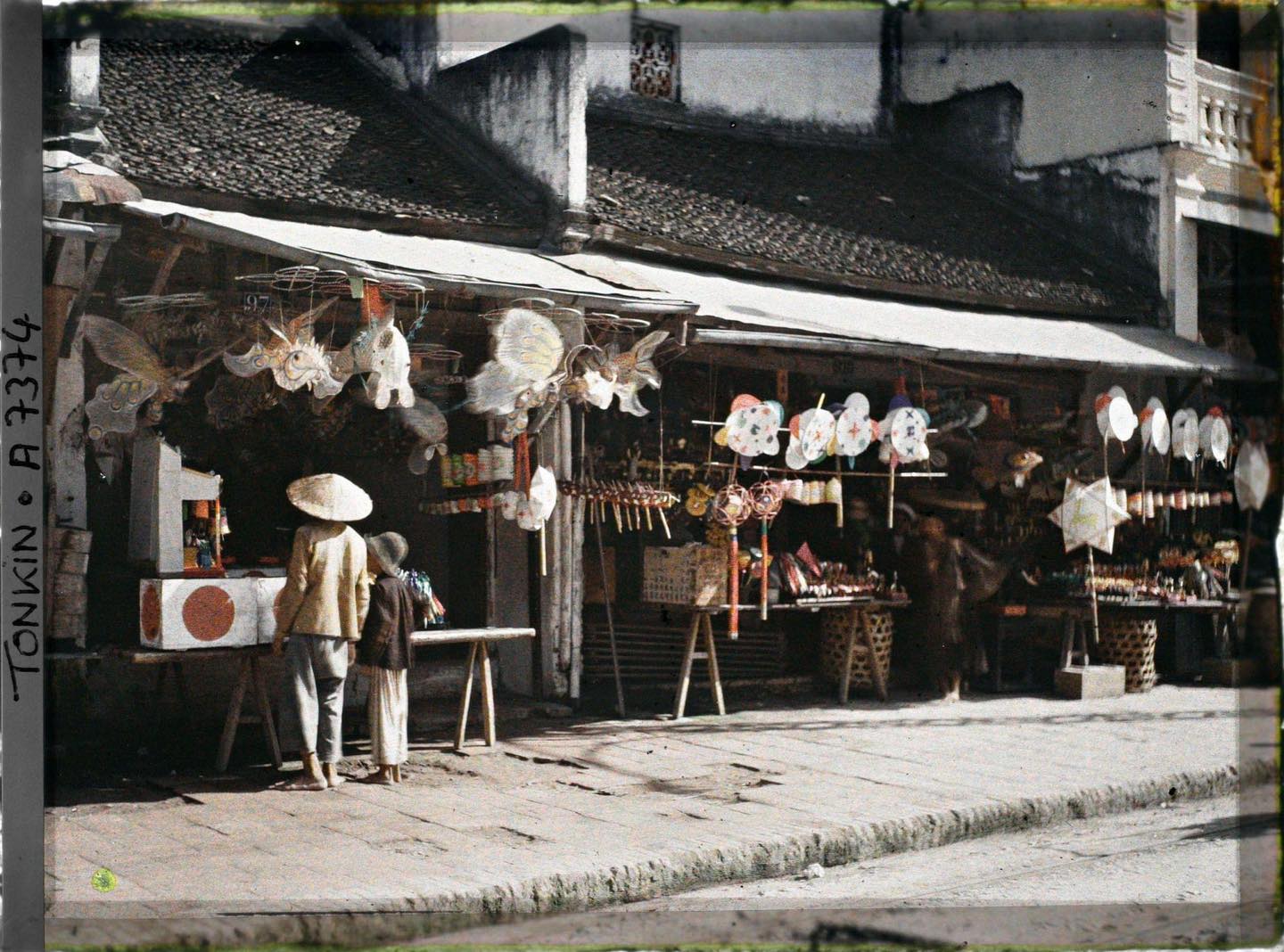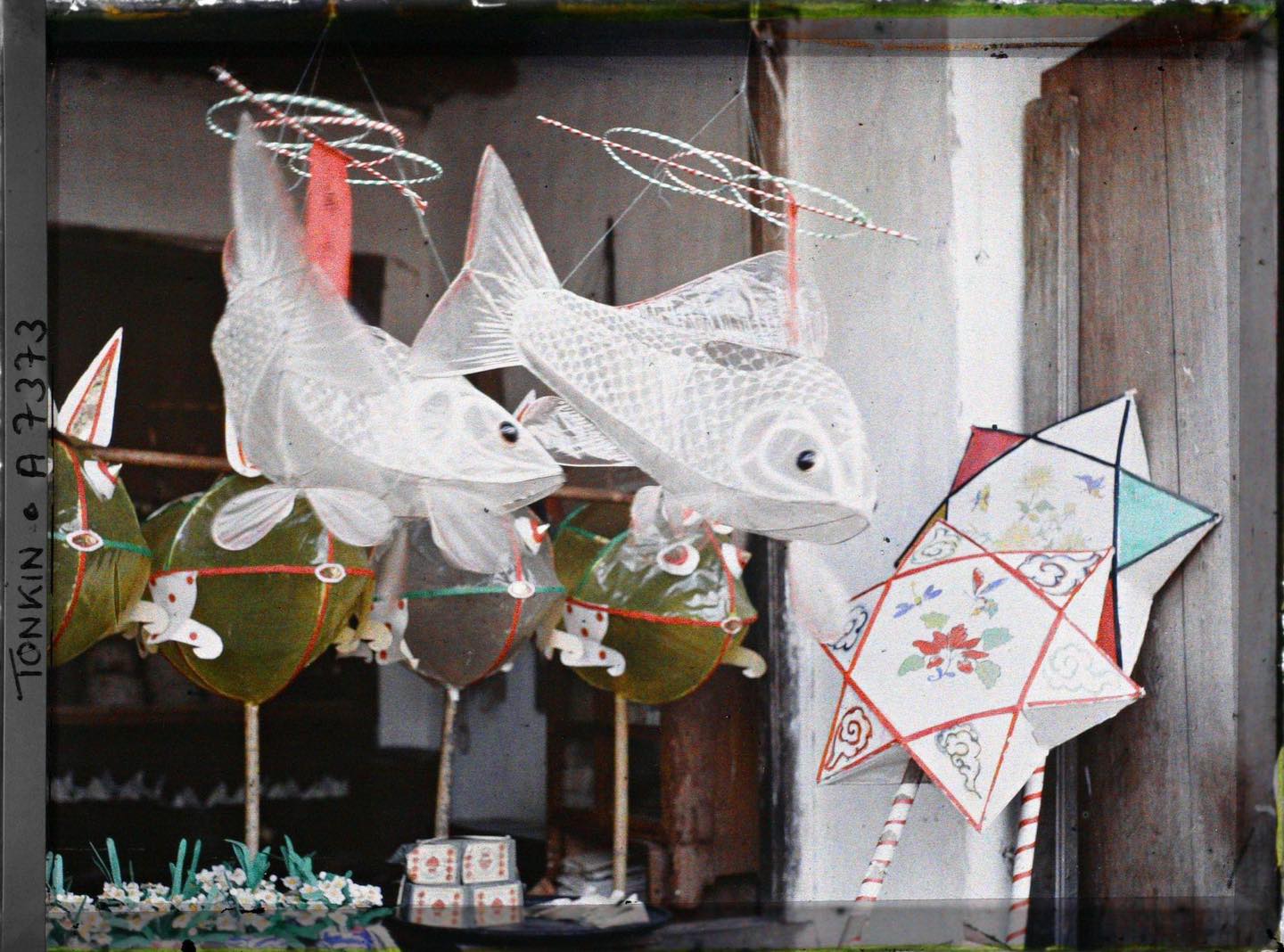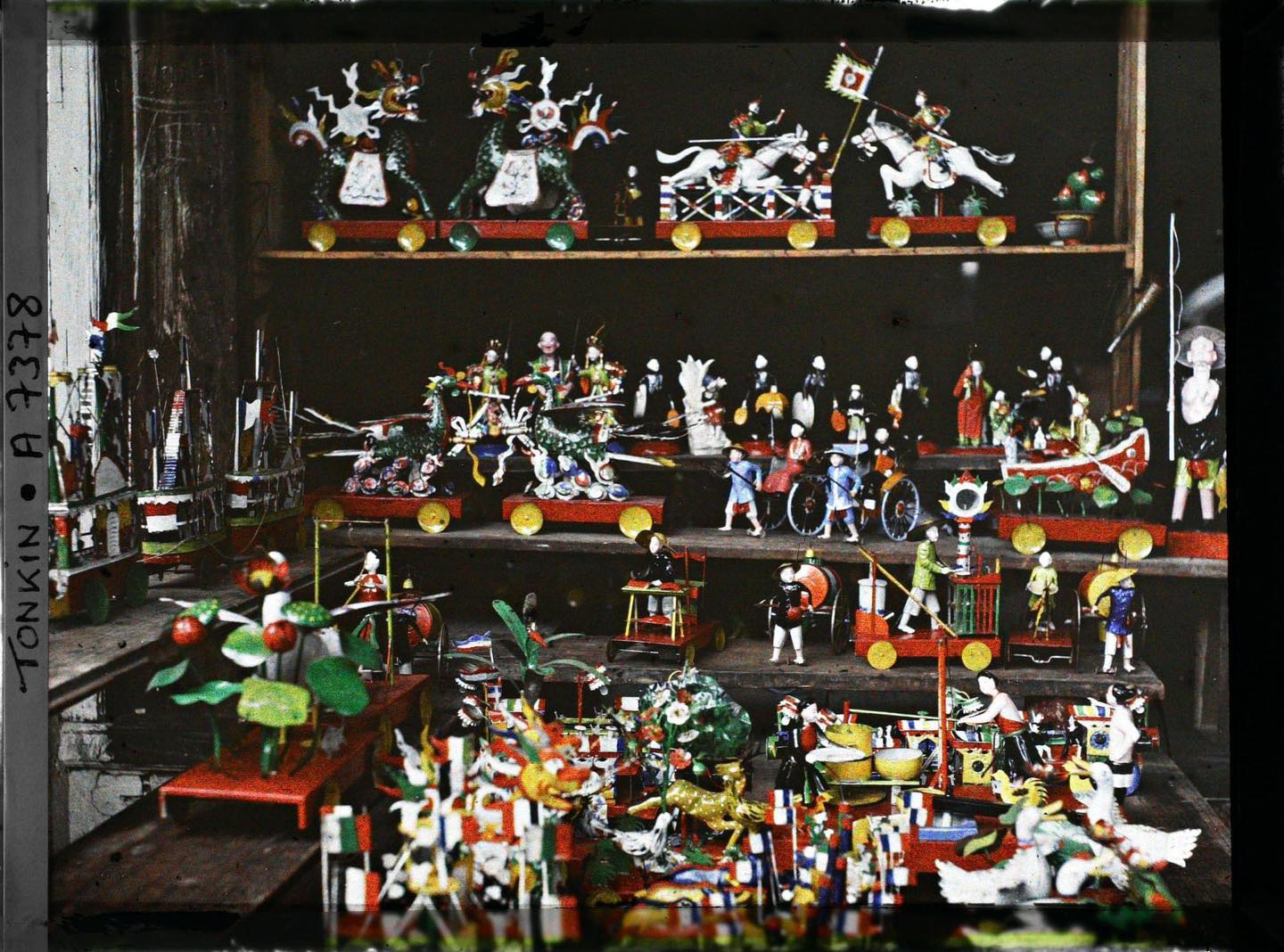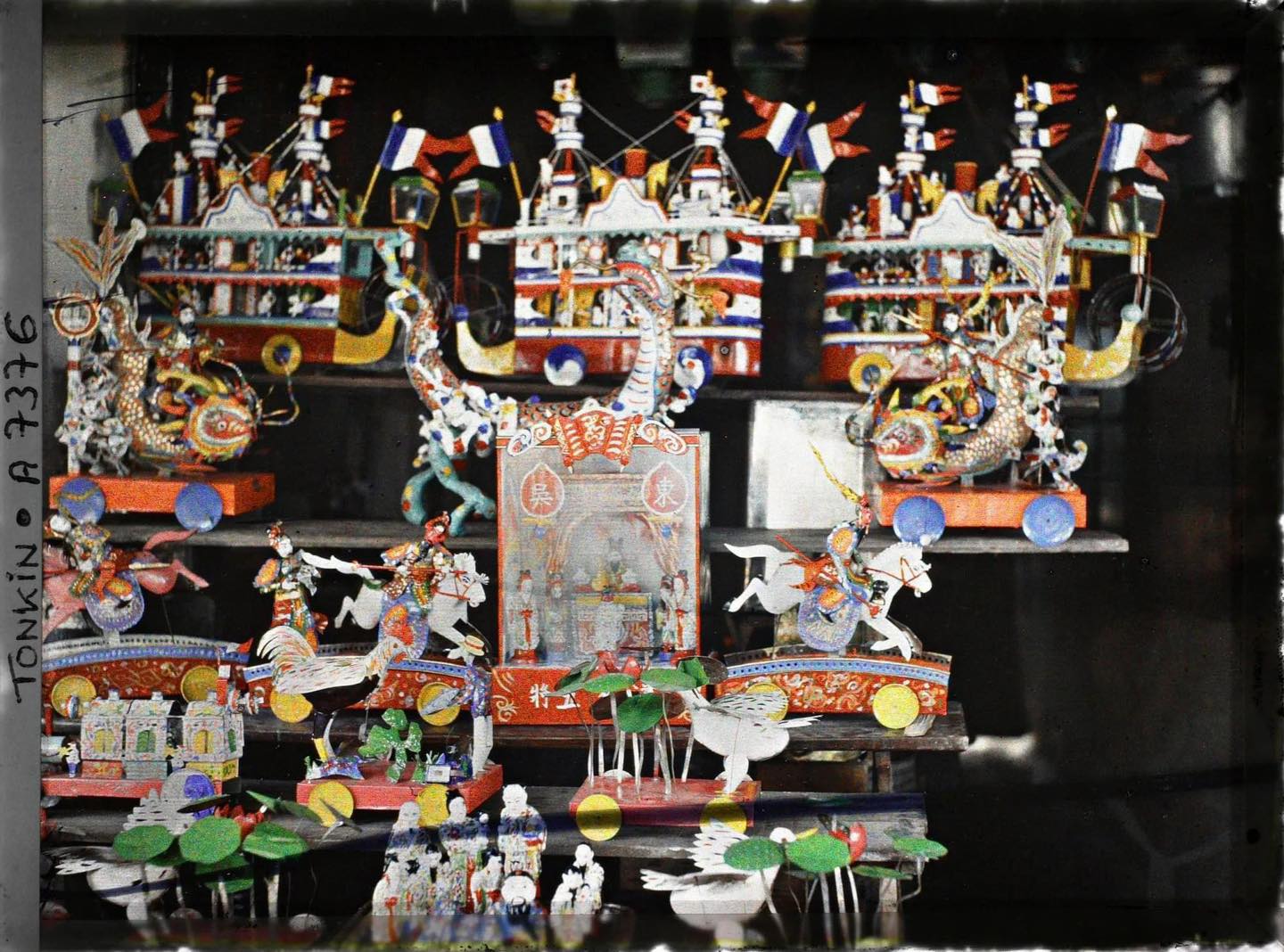The stunning photographs of Hanoi’s Mid-Autumn Festival, captured by photographer Leon Busy, offer a unique glimpse into the city’s rich cultural heritage and vibrant traditions. The images are part of a larger collection, totaling 1,382 photographs of Vietnam, currently exhibited at the Albert Kahn Museum in France.
|
|
|
Hang Gai Street in 1915, bustling with a toy shop filled with Mid-Autumn Festival delights. |
Sponsored by French entrepreneur Albert Kahn, Leon Busy embarked on a journey to Vietnam from 1914 to 1917. His mission was to capture the essence of daily life in northern Vietnam, and he certainly delivered.
Beyond the historic streets of Hanoi, such as Hang Luoc and the tranquil setting of Tran Quoc Pagoda, Busy’s lens focused on the festive atmosphere of Hang Gai Street. There, a mid-autumn toy shop displayed its colorful wares in 1915.
These photographs are believed to be the earliest colored images of Hanoi, made possible through autochrome color photography. They serve as invaluable historical records, showcasing the city’s past while highlighting the photographer’s artistic eye for composition, angles, and subject matter.
|
|
|
The distinct separation of Hang Gai Street’s sidewalks and vehicle lanes was a result of urban planning by the French colonial administration in 1890. |
|
|
|
Lanterns and toys artfully arranged, creating a festive display. |
|
|
|
The creativity and variety of the lanterns’ sizes and shapes are captivating. |
|
|
|
Iron human figures, a unique feature of the festival, stand out with their bright and eye-catching attire. |
|
|
|
The intricate and exquisite mid-autumn pewter toys, now a lost art, showcase the craftsmanship of a bygone era. |
Mid-autumn festival opens in Hanoi’s Old Quarter
NDO – The 2017 Mid-autumn festival kicked off in front of Dong Xuan Market gate in Hanoi’s Old Quarter on the evening of September 22 with a joyful drum performance and lion dance.
Trong Quan Singing in Bui Xa
Trong quan singing, a type of popular art which alternates singing with drum accompaniments, has been performed for over 700 years in Bui Xa Village, Ninh Xa Commune, Thuan Thanh District of northern Bac Ninh Province. Local villagers are well aware of maintaining it as part of their cultural heritage which was formed in the land of the country’s ancient cultural hub.

